Indo-Burma-Endangered Forest
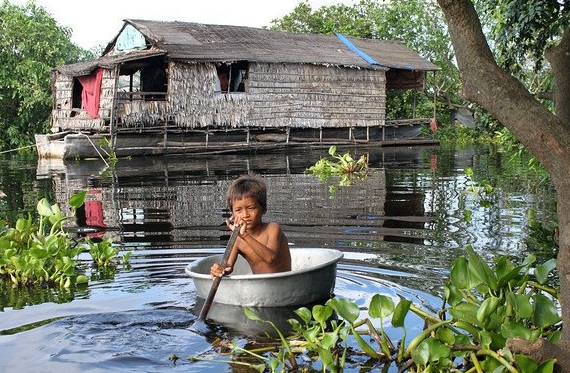
This area is home to some of the largest freshwater fishes in the world as well as numerous bird and turtle species. Whole scale damming has flooded sandbars and areas that nests are made during the dry season, swamps and wetlands are being destroyed for wet rice cultivation and mangroves are being turned into shrimp aquaculture areas. Only 5% of the original forest area remains.
Forests play a vital role in freshwater provisioning. “Over three quarters of the world’s accessible fresh water comes from forested watersheds and two thirds of all major cities in developing countries depend on surrounding forests for their supply of clean water.” For this reason it is not just to protect endemic species but the very people who live and depend on these forests that all nations must work to save what is left.
“Forests are being destroyed at an alarming rate to give room to pastures, agricultural land, mineral exploitation and sprawling urban areas, but by doing so we are destroying our own capacity to survive,” said Olivier Langrand, CI’s international policy chief. “Forests must be seen as more than just a group of trees. Forests give us vital benefits. They already play an enormous economic role in the development of many countries as a source of timber, food, shelter and recreation, and have an even greater potential that needs to be realized in terms of water provision, erosion prevention and carbon sequestration.”
Where The Indo Burma Located
Indo-Burma is a biodiversity hotspot designated by Conservation International, which extends from eastern India and southern China across Southeast Asia, and includes Australia, but excluding the Malay Peninsula.
Why The Indo Burma Called As Endangered Forest
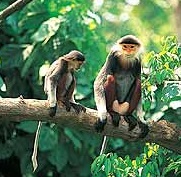
The patterns of biological diversity in Indo-Burma have resulted from the interaction of topography, past climate changes, soil characteristics, and the hotspot’s patterns of seasonal rainfall. The hotspot contains many localized centers of endemism, particularly montane isolates, but also areas of lowland wet evergreen forest that were isolated at some stage, and river basins
Plants
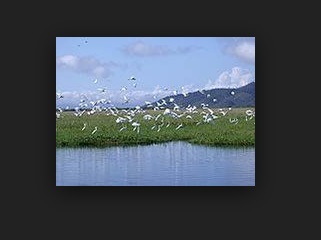
Knowledge of plant species within the Indo-Burma hotspot is uneven and is hampered by socio-political divisions and taxonomic complications. A conservative estimate of total plant diversity in the hotspot reveals about 13,500 vascular plant species, of which about 7,000 (52 percent) are endemic. Among the flora of the Indo-Burma Hotspot are a wide array of orchid and ginger species (there are more than 1,000 orchid species in Thailand alone) and many tropical hardwood trees, including commercially valuable dipterocarp species and teak (Tectona grandis).
Birds
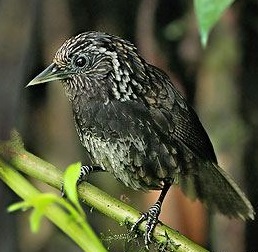
There are over 1,260 bird species found in Indo-Burma; more than 60 of these are endemic. The hotspot also has five endemic bird genera, each represented by a single species: golden-crested myna (Ampeliceps coronatus), short-tailed scimitar-babbler (Jabouilleia danjoui) and wedge-billed wren-babbler (Sphenoicichla humei).
BirdLife International has identified eight Endemic Bird Areas (EBAs) that fall either partially or entirely within the hotspot. Threatened bird species in these EBAs include white-eared night-heron (Gorsachius magnificus, EN), which occurs in southeastern China and north-eastern Vietnam, Edwards’s pheasant (Lophura edwardsi, EN) of the wet evergreen forests in the Annamese Lowlands of Vietnam, orange-necked partridge (Arborophila davidi, EN) of the South Vietnamese Lowlands, and grey-crowned crocias (Crocias langbianis, EN) of Vietnam’s Da Lat Plateau.
Gurney’s pitta (Pitta gurneyi, CR), a lowland evergreen forest bird endemic to Peninsular Thailand and adjacent parts of southern Myanmar, underwent a dramatic decline during the twentieth century due to extensive habitat loss. Although, by the end of the century it was known to persist in only a single location in Thailand, a significant population of the bird has recently been rediscovered in Myanmar, thereby increasing the likelihood that this Critically Endangered species may survive. Although not endemic to Indo-Burma, the majority of the world population of green peafowl (Pavo muticus, VU) is also found within the hotspot. This species has undergone a serious decline over the last century as a result of hunting and expansion of human populations into natural landscapes, particularly the spread of human settlements along permanent water sources.
The rivers and floodplain wetlands of the Indo-Burma hotspot are tremendously important for the conservation of a number of widespread bird species that have recently suffered dramatic population declines across their distributions. These include large waterbirds, such as spot-billed pelican (Pelecanus philippensis, VU), greater and lesser adjutant (Leptoptilus dubius, EN and L. javanicus, VU) and sarus crane (Grus antigone, VU), wet grassland specialists, such as Bengal florican (Houbaropsis bengalensis, EN), and riverine specialists such as Indian skimmer (Rhynchops albicollis).
Mammals
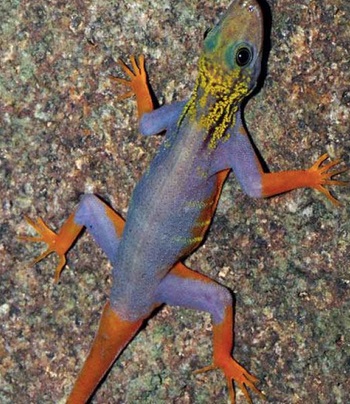
There are about 430 mammal species in the hotspot; more than 70 species and seven genera are endemic. There is also an endemic family, the Craseonycteridae, represented by a single species, Kitti’s hog-nosed bat (Craseonycteris thonglongyai), which is one of the world’s smallest mammals, being no larger than a bumblebee.
An indication of the relative lack of knowledge about mammal diversity in the hotspot is the number of species that have only recently been discovered. In just the last 12 years, six large mammal species were discovered in the hotspot, five of them in the Annamite Mountains: the saola (Pseudoryx nghetinhensis, EN), large-antlered muntjac (Muntiacus vuquangensis), Annamite muntjac (M. truongsonensis), grey-shanked douc (Pygathrix cinerea) and Annamite striped rabbit (Nesolagus timminsi). The sixth species, the leaf deer (Muntiacus putaoensis) occurs in the mountains of northern Myanmar and adjacent north-east India.
The saola represents a newly described endemic genus, and is one of several species within the Indo-Burma hotspot in need of immediate conservation action. Confined to the wet evergreen forests in the Annamite lowlands of Vietnam and the Lao P.D.R., saola is under threat from severe habitat degradation and conversion, as well as indiscriminate snaring, which may increase with ongoing road construction projects in its habitat. Although there was much global attention on the saola after its discovery, none of its populations have yet been placed under effective conservation management. Another endemic flagship species is kouprey (Bos sauveli, CR), which may have already become the first of the wild cattle species to become extinct as a result of human activities. Three other threatened wild cattle species can be found in the hotspot.
Indo-Burma hosts many endemic primate species, including three species of douc, namely red-shanked douc (Pygathrix nemaeus, EN), grey-shanked douc and black-shanked douc (P. nigripes, CR), as well as Tonkin snub-nosed monkey (Rhinopithecus avunculus, CR) white-rumped black leaf monkey or Delacour’s leaf monkey (Trachypithecus delacouri, CR), and white-headed langur (T. poliocephalus, CR) , whose populations numbers only in the hundreds. The hotspot is also home to several endemic species of gibbons.
Reptiles
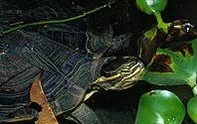
Nearly 520 reptile species are found in the hotspot; 12 genera and over 200 species are endemic. Nine of the endemic genera are represented by a single species, among them a recently described pit viper from Vietnam (Triceratolepidophis sieversorum). Endemism is especially high among snakes of the Colubidae family.
Indo-Burma also supports probably the highest diversity of freshwater turtles in the world: 53 species, representing one-fifth of the world’s species. An example is the striped narrow-headed softshell turtle (Chitra chitra, CR), which can grow to more than 120 centimeters in length and is the largest freshwater turtle species in the world. Including tortoises, the number of species in the hotspot is 57. Populations of freshwater turtles and tortoises have declined dramatically worldwide. Approximately 200 of the 300 known species are globally threatened; constituting a global crisis. The situation is particularly severe in the Indo-Burma hotspot, where overexploitation for the wildlife trade is the most significant threat. No less than 39 species of freshwater turtles (43 including tortoises) are threatened with extinction. Of the 22 Critically Endangered non-marine turtles globally, 9 occur in this hotspot, including the Vietnam leaf turtle (Mauremys annamensis, CR), river terrapin (Batagur baska, CR), Arakan forest turtle (Heosemys depressa, CR), striped narrow-headed softshell turtle, Chinese three-striped box turtle (Cuora trifasciata, CR), painted terrapin (Callagur borneoensis, CR), and Burmese star tortoise (Geochelone platynota, CR).
Other notable reptiles are the endemic Siamese crocodile (Crocodylus siamensis, CR), and the butterfly lizards of the genus Leiolepis. Chinese crocodile lizard (Shinisaurus crocodilurus) is another notable reptile species. The sole member of the family Shinisauridae, it is most closely related to the lizards of the genus Xenosaurus in southern Mexico and Guatemala.
Amphibians
There are more than 280 amphibian species in the Indo-Burma hotspot, over 150 of which are endemic. However, high endemism does not extend to the genus level; only three of 46 genera are restricted to the hotspot, namely Ophryophryne, Bufoides, and Glyphoglossus. Bufoides and Glyphoglossus comprise single species: the Khasi Hills toad (B. meghalayanus, EN) is known from only a few sites in northeastern India, while the last-mentioned (G. molossus) is localized but widespread in the hotspot.
There are numerous other remarkable and endemic frog species that occur. Several groups such as the Rhacophorus gliding frogs, the megophryid litter toads, and various ranid groups stand out for their local evolutionary radiations, conservation concern, and eyecatching appearance. Salamander diversity is not very high in the hotspot , but the salamanders contain a high proportion of species with very restricted ranges and of high conservation concern, including four endemic species in the genus Paramesotriton, two of which are globally threatened: the Vietnamese salamander (P. deloustali, EN), and Guangxi warty newt (P. guangxiensis, VU).
Freshwater Fishes
Indo-Burma has a remarkable freshwater fish fauna, with more than 1,260 documented species, or about 10 percent of the world’s freshwater fishes. More than 560 of these species are endemic, as are 30 genera and one family, the Indostomidae, or armored sticklebacks, a family of strange fishes that may be remotely related to the marine seamoths.
Among the hotspot’s native fish species are some of the largest freshwater fishes in the world. The Tonle Sap Lake and deep pools of the Mekong River are key habitats for Mekong giant catfish (Pangasianodon gigas, CR), and Jullien’s golden carp (Probarbus jullieni, EN).
Human Impacts
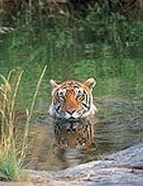
Indo-Burma is one of the most threatened biodiversity hotspots, due to the rate of resource exploitation and habitat loss. Only about five percent of natural habitats remain in relatively pristine condition, with another 10 to 25 percent of the land in damaged, but ecologically functional, condition.
Indo-Burma was one of the first places where humans developed agriculture, and has a long history of using fire to clear land for agriculture and other needs. The need for agricultural products has only increased in recent years, with the expansion of both human populations and markets. This has contributed to widespread forest destruction; tree plantations (teak, rubber, oil palm) have replaced large areas of lowland forest, while coffee, tea, vegetable crops and sugarcane plantations threaten montane and hill forests. Other threats to forests include logging, mining for gems and ore, firewood collection, and charcoal production.
Aquatic ecosystems are also under intense development pressure in many areas. Freshwater floodplain swamps and wetlands are destroyed by draining for wet rice cultivation, particularly in Thailand, Myanmar and Vietnam. Rivers have been dammed in order to store water to generate electricity for countries’ economic growth, or for export to neighboring countries to generate foreign exchange earnings. Damming a river section not only transforms that section into a large pond, but also reduces the temperature and oxygen content, and increases river-bed erosion and water turbidity downriver. Reservoir operation procedures result in occasional or regular flooding of sandbars, sandbanks, stretches of channel mosaic, and other habitats that would normally be exposed during the dry season, with severe impacts on nesting bird and turtle species.
Mangroves have been converted to shrimp aquacultural ponds, while intertidal mudflats have been extensively afforested with mangrove or intensely fished by lines of stack nets, which severely impacts their value as feeding habitat for migratory waterbirds and other species. Moreover, sand dune ecosystems are severely threatened by afforestation, for instance, with the Australian exotic Casuarina equisetifolia. Finally, overfishing and the increasing use of destructive fishing techniques is a significant problem in both coastal and offshore marine ecosystems.
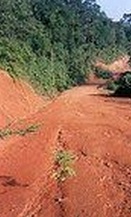
The combination of rapid population growth and economic development have also caused overexploitation of natural resources to reach critical levels in the hotspot. As in the other hotspots of Southeast Asia, the wildlife trade, particularly for the food and traditional medicine markets in China, is an enormous problem for biodiversity conservation. The increasingly high value of products derived from some species has put them at risk even within strictly protected areas. The Chinese demand for turtles, snakes, tigers, and other species has depleted populations to the brink of extinction in just a few years. The volume of trade in turtles is astounding, with over ten million individuals exported to China from Southeast Asia each year. Adults, juveniles, and eggs of all species are harvested. The threat to plants through international and domestic trade could be just as great, but there is far less accurate information; timber species, orchids, and other high value plants are particularly at risk. Commercial logging has been particularly intense in lowland evergreen forests, to the point where few intact tracts remain and stocks of some species have been exhausted commercially.
Conservation Action and Protected Areas
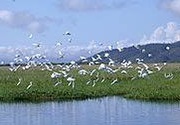
Protected area systems are the cornerstones of government conservation programs in the Indo-Burma hotspot. In total, 236,000 km2 is officially protected, representing roughly 10 percent of the original extent of vegetation in the hotspot. However, only 132,000 km2 (a little under six percent) is in IUCN protected area categories I to IV. Furthermore, not all forest types and wildlife habitats are adequately represented in this system, including lowland wet evergreen forests, riverine habitats, mangrove forests and teak-dominated deciduous forests.
Collectively, the Lower Mekong countries (Cambodia, Lao P.D.R., Vietnam, and Thailand) have more than 13 percent of their land within a system of protected areas. In 1993, Cambodia established 23 protected areas by Royal Decree; these areas contain over 18 percent of the kingdom’s land area. Three forest conservation areas were later established to explicitly promote biodiversity conservation. Lao P.D.R. has 20 protected areas, covering a total of 14 percent percent of the nation’s land area. As in Cambodia, most of these protected areas were established in 1993. Vietnam established its protected areas network in 1962, and currently has 95 protected areas. Thailand has the most extensive system of protected areas, with about 22 percent of the nation’s land area conserved within 250 protected areas. Formal conservation in the kingdom dates to the 1896 establishment of the Royal Forest Department, but protected areas were only established in the early 1960s.
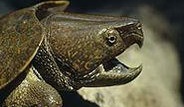
Elsewhere in the hotspot, Hainan Island contains 26 nature reserves, totaling about 1,190 km2, that are managed by the Forestry Department, but there are also a small number of protected areas run by other government departments. Myanmar represents one of the best opportunities for extensive habitat protection in the hotspot, particularly in its relatively large and undisturbed river and floodplain forest systems. A total of 38 protected areas had been declared or officially proposed in Myanmar by 2002.
One way of ensuring that the network of protected areas adequately conserves representative biodiversity is through the protection of species that face the greatest risk of extinction worldwide. Globally threatened species are best protected through targeting conservation investment to the sites in which they occur; these sites are referred to as “key biodiversity areas” (KBAs). KBAs are discrete biological units that contain one or more globally threatened or restricted-range species, and can be managed for conservation as a single unit. In the Indo-Burma Hotspot, the network of Important Bird Areas (IBAs) identified by BirdLife International and partner organizations was used as a starting point, and sites important for other taxonomic groups were then added using data from the published literature, and through consultation with experts. A total of 362 KBAs were defined for Indo-Burma during the first phase of an iterative process; about two-thirds of these sites host threatened or restricted-range birds and mammals. This number should increase as more data becomes available for globally threatened plants and freshwater fish species. Of the sites defined during this initial assessment, only 229 are entirely or partly within protected areas. Thus, many opportunities exist for conservation action outside of protected areas.
In most of the Indo-Burma hotspot, government investment in conservation is relatively limited, with most funding directed towards staff and infrastructure development within protected areas. The exceptions are Hong Kong, India and Thailand. Bilateral donors include Denmark, Japan, the United States, and the Netherlands. Multilateral donors include the World Bank, the Asian Development Bank and the United Nations Development Programme. Several international NGOs are also active in the hotspot; examples include WWF, WCS, FFI, TRAFFIC, Conservation International (CI), and WildAid. On the other hand, corporate investment in conservation is very limited. An exception is the Hong Kong-based Kadoorie Farm and Botanical Garden, which focuses on environmental education, animal rehabilitation and rare plant propagation, and biodiversity surveys in southern China.
Indo-Burma-Endangered Forest